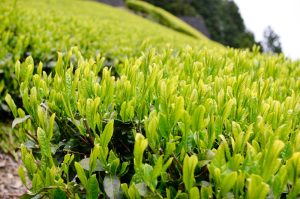Nanmei (なんめい, 南茗) can be translated as “south tea”.
It was named this way because it is an early budding cultivar that is suitable for the southern regions of Japan, which are warmer.
History of Nanmei
This was the first Japanese tea cultivar to be selected with the help of DNA marker technology.
The main idea was to have a cultivar that could resist the pest known as the white peach scale.
In 1992 the Sayamakaori cultivar was crossed with Makurazaki 13 (枕崎13号), a cultivar known for making a good quality sencha.
Makurazaki 13 is a hybrid of Yabukita and another cultivar named Makura F1-10115 (枕 F1- 10115).
Furthermore, Makura F1-10115 comes from Benitachiwase and Makura F1-288, whose parents are Indian and Chinese tea plants.
Coming back to Nanmei, the best offspring was selected and it was registered in 2014 under the seed and seedling law.
Characteristics of Nanmei
Nanmei has a strong resistance to the white peach scale and the gray blight.
It has medium resistance to anthracnose, and it is weak against the blister blight and the bacterial shoot blight.
Since Nanmei is easily damaged by frost, it is suitable for warm climates.
It can be picked 6 to 7 days earlier than Yabukita, and offers a similar yield.
Once made into a sencha, it has a good quality.
The leaves are deep green in color, and the taste is refreshing and slightly sweet.
Nanmei has a good balance of umami taste and astringency.





